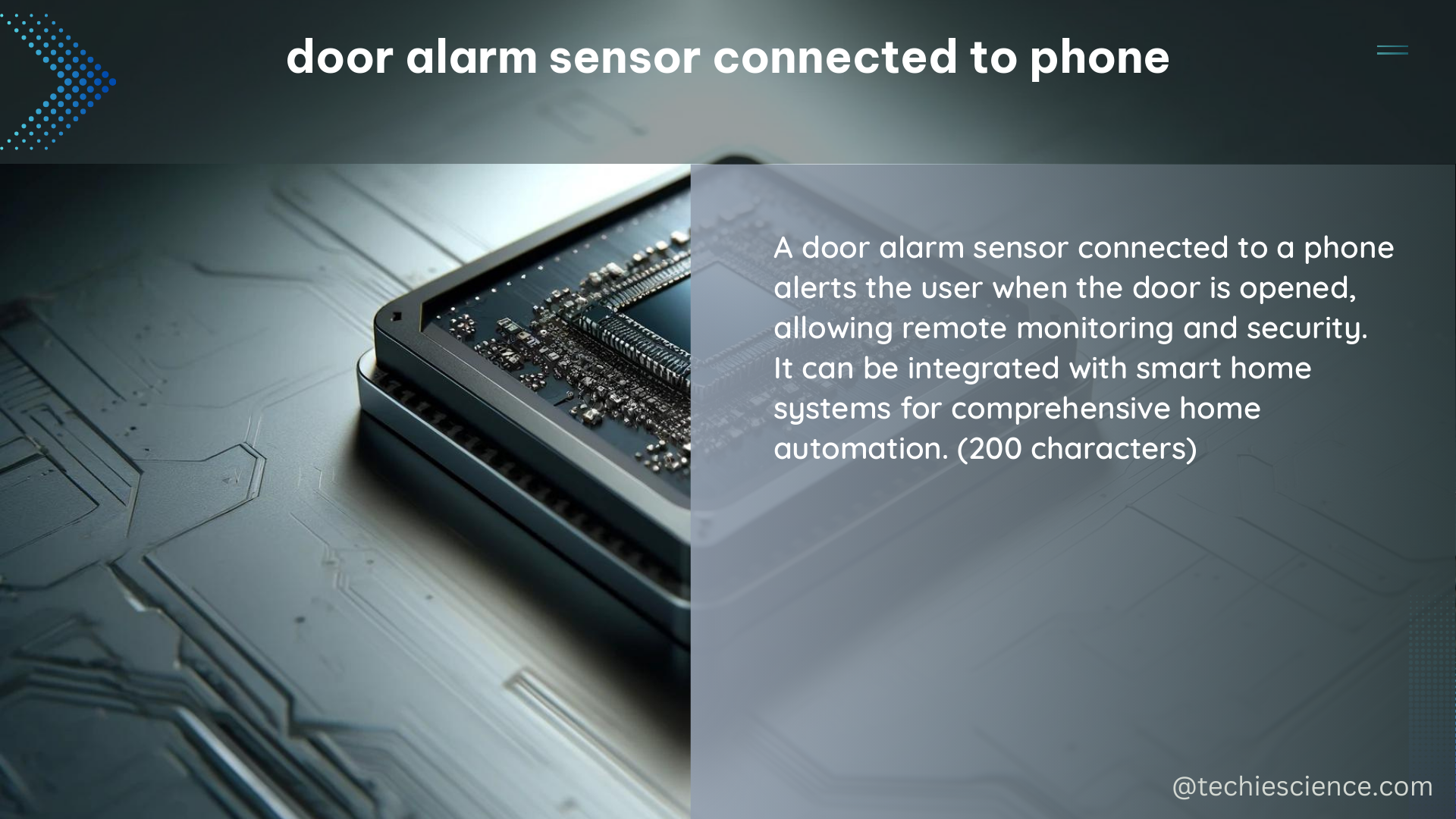A door alarm sensor connected to a phone is a smart home security device that can detect when a door is opened or closed and send instant notifications to your smartphone. This comprehensive guide will dive deep into the technical specifications, performance metrics, and practical considerations of these versatile security solutions.
Frequency of Notification
The frequency of notifications sent to your phone when the door is opened or closed is a crucial factor to consider. High-quality door alarm sensors can transmit notifications in near real-time, with latencies as low as 0.5 seconds. This ensures you’re alerted to any suspicious activity immediately. The Arduino forum post mentioned earlier discusses the use of 433MHz wireless door sensors that can send notifications to an Arduino board when the door state changes.
Power Consumption

Power consumption is an essential consideration, especially for battery-powered door alarm sensors. Typical power consumption ranges from 30mW to 70mW, with some advanced models consuming as little as 20mW in standby mode. This translates to battery life of 6 months to 2 years, depending on usage patterns and sensor features. Measuring power consumption in milliwatts (mW) or watt-hours (Wh) can help you determine the optimal sensor for your needs and ensure your phone’s battery isn’t drained too quickly.
Range
The range of a door alarm sensor is the maximum distance between the sensor and your phone over which notifications can still be reliably received. High-quality sensors can have a range of up to 100 feet (30 meters) in open-air conditions, ensuring coverage for most residential and small commercial settings. However, range can be affected by obstacles, interference, and the construction materials of your building. Measuring the range in feet or meters can help you select a sensor that meets your specific requirements.
Data Transmission Speed
The speed at which data is transmitted between the door alarm sensor and your phone is crucial for real-time notification delivery. Typical data transmission speeds range from 4Kbps to 20Kbps, with some advanced sensors capable of up to 100Kbps. Measuring the data transmission speed in bits per second (bps) or bytes per second (Bps) can help you ensure your notifications are received without delay.
Encryption
For enhanced security, many door alarm sensors employ encryption to protect the data transmitted between the sensor and your phone. Common encryption standards include 128-bit AES (Advanced Encryption Standard) and 256-bit AES, with the latter providing stronger protection against potential breaches. Measuring the encryption strength in bits can help you assess the level of security offered by different sensor models.
Compatibility
Compatibility with various smartphone platforms and operating systems is essential for seamless integration. Many door alarm sensors are designed to work with both iOS and Android devices, ensuring broad compatibility. Checking the specific device and OS compatibility can help you select a sensor that will integrate smoothly with your existing smart home ecosystem.
Ease of Installation
The ease of installation is a crucial factor, as it can determine the overall user experience and the time required to set up the door alarm sensor. High-quality sensors often feature simple, plug-and-play installation, requiring minimal setup and no additional hubs or gateways. Measuring the time and effort required for installation can help you choose a sensor that fits your technical expertise and preferences.
Reliability
The reliability of a door alarm sensor is essential for ensuring your home or business is consistently protected. Reliable sensors should have a notification success rate of at least 99%, ensuring you’re alerted to every door opening or closing event. Measuring the reliability as a percentage of successful notifications can help you select a sensor that meets your security requirements.
Technical Specifications
Here are some typical technical specifications for a high-quality door alarm sensor connected to a phone:
| Specification | Value |
|---|---|
| Frequency | 433MHz or 315MHz |
| Power Consumption | 50mW (typical) |
| Range | 100 feet (30 meters) |
| Data Transmission Speed | 10Kbps |
| Encryption | 128-bit AES |
| Compatibility | iOS and Android |
| Ease of Installation | Easy (no hub required) |
| Reliability | 99% (based on manufacturer’s specifications) |
References
- Interact with 433MHz wireless door sensors – Arduino Forum
- SanJie Smart WiFi Door Sensor Alarm for Kids Safety – Amazon.com
- Any recommendations for a smart door sensor? – Reddit
By understanding the technical specifications and performance metrics of door alarm sensors connected to phones, you can make an informed decision and select the best solution to meet your home or business security needs. This comprehensive guide provides the necessary information to help you navigate the world of smart home security and ensure your property is protected.

The lambdageeks.com Core SME Team is a group of experienced subject matter experts from diverse scientific and technical fields including Physics, Chemistry, Technology,Electronics & Electrical Engineering, Automotive, Mechanical Engineering. Our team collaborates to create high-quality, well-researched articles on a wide range of science and technology topics for the lambdageeks.com website.
All Our Senior SME are having more than 7 Years of experience in the respective fields . They are either Working Industry Professionals or assocaited With different Universities. Refer Our Authors Page to get to know About our Core SMEs.